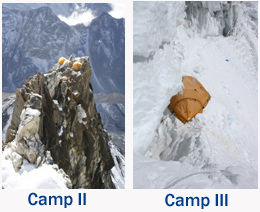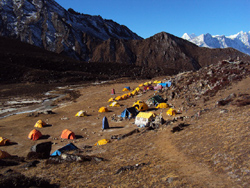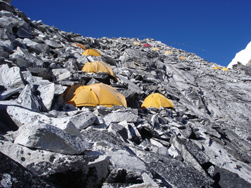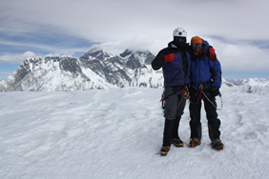
| Amadablam EXPEDITION | |
Amadablam is known as a one of the world's most beautiful peak, alongside the Matterhorn and KhanTengri. The experienced mountaineer will find the South East Ridge, at its easiest.It offers good steep mixed climbing in the most stunning and exposed situations. Fixed lines will be used to ease our ascent for most of its length. The ascent to Camp One at 5800m is quite straight forward from which point it gradually steepens as we move onto the rocky south-west ridge. The final approach to the summit is on snow slopes up to 45 degrees. |
|
Base Camp |
Base Camp to Base Camp
|
Climb 3 Peaks - Everest Base Camp/Island Peak 6186 M/Lobuje Peak 6119, AmaDablam 6812 M. |
|
|
|
 |
|
|
|
Equipments Check List Climbing Equipment
Footwear
Note: A High altitude double plastic boot in conjunction with a fully insulated overboot can substitute for the High Altitude All-In-One you will want to bring a pair of gaiters for lower on the mountain before switching to the insulated overboot. Technical Clothing
Handwear
Headwear
Personal Equipment
Traveling
First Aid
This list is only a guide. While you are required to bring everything on this list, there are numerous options, brands, and versions of each piece of equipment; you can search nearby your home town market or out of country |
|

 Camp I
Camp I Sumit
Sumit